

Max Davies
2026 GWM Cannon Ultra review
5 Days Ago
The Mini Electric, or Cooper SE, is very expensive and very flawed. But, it has charm in spades and stays true to the brand's cute, funky vibe.

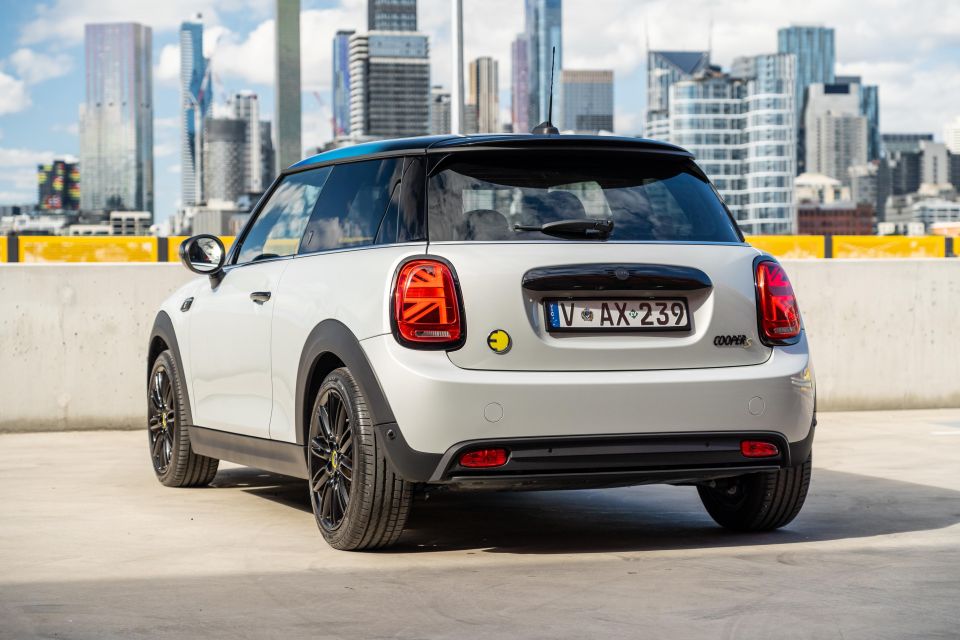

Marketplace Editor

Marketplace Editor


Marketplace Editor

Marketplace Editor
Quickly see how this car stacks up against its competition. Select any benchmark to see more details.
Where expert car reviews meet expert car buying – CarExpert gives you trusted advice, personalised service and real savings on your next new car.
The Mini Electric has been around for a while now, but it hasn’t been met with the same fanfare in Australia as, say, the Tesla Model 3.
Just 291 units were sold during 2021 in Australia, trailing the likes of the Hyundai Kona Electric, Mercedes-Benz EQA and Nissan Leaf, and well short of the Model 3’s 12,094 yearly sales haul last year.
You’d think the Mini 3-Door Hatch would be the perfect EV – light, fast and fun to drive. As we’ll get to in this review, the concept works but the company’s execution is quite flawed, if charming.

Here on test we have the flagship 2022 Mini Electric Hatch Mini Yours Multitone (deep breath).
Priced at over $60,000 the top-spec Electric Mini is positioned firmly in Tesla Model 3 territory, as well as other compelling EV alternatives. On paper, the Mini Electric Hatch, or Cooper SE as it’s also known, is lacking in driving range and some features we’ve come to expect of the price point.
Can the retro-styled EV claw back some ground in the real world?
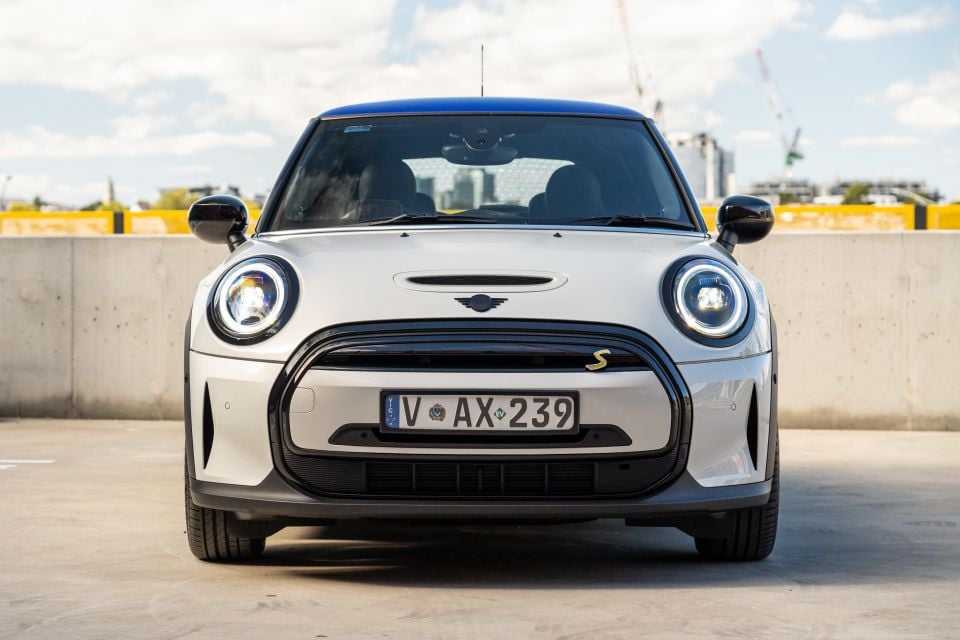
You can get into the entry-level Mini Electric Hatch Classic (or Cooper SE Classic), from $55,650 before on-road costs, which is still pricey but not as eye-watering as our test car’s $62,825 plus on-roads ticket – working out to $69,505 drive-away according to the brand’s online configurator.
Thankfully, while the asking price is quite high, Mini no longer offers a cost-option catalogue like it once did, rather making the distinct trim levels act as option packages.
The high-grade Mini Yours specification here has absolutely everything the company can throw at it, and you don’t pay extra for any of the up to 25 exterior colour combinations, two interior colour options, or up to five wheel designs.
Regardless, that’s still a lot of money for a city-sized electric vehicle with just 233 kilometres (maximum) driving range. There are similarly-priced vehicles that are larger inside with almost double the range.
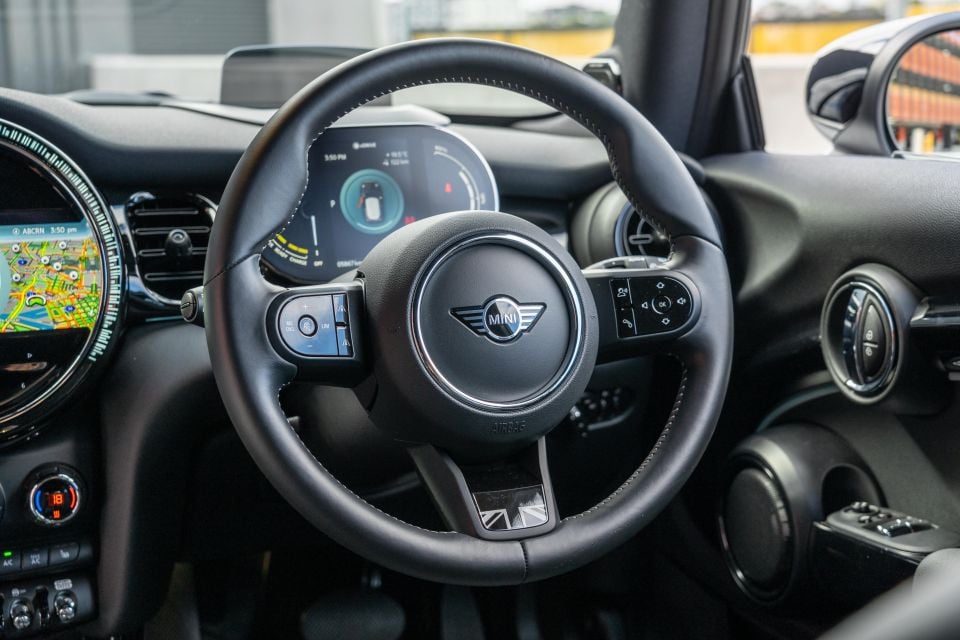
Key rivals include:
All prices exclude on-road costs


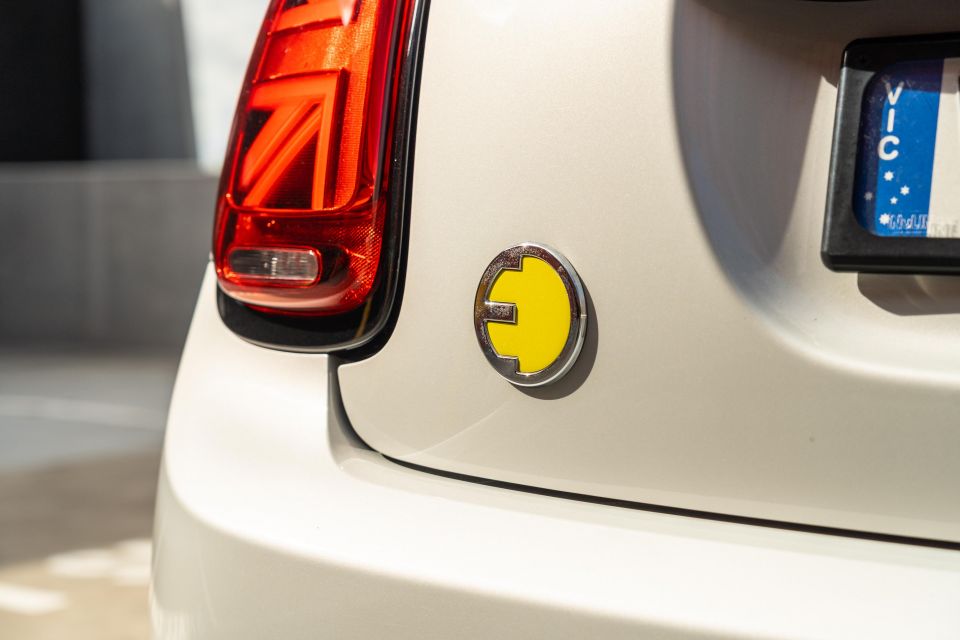
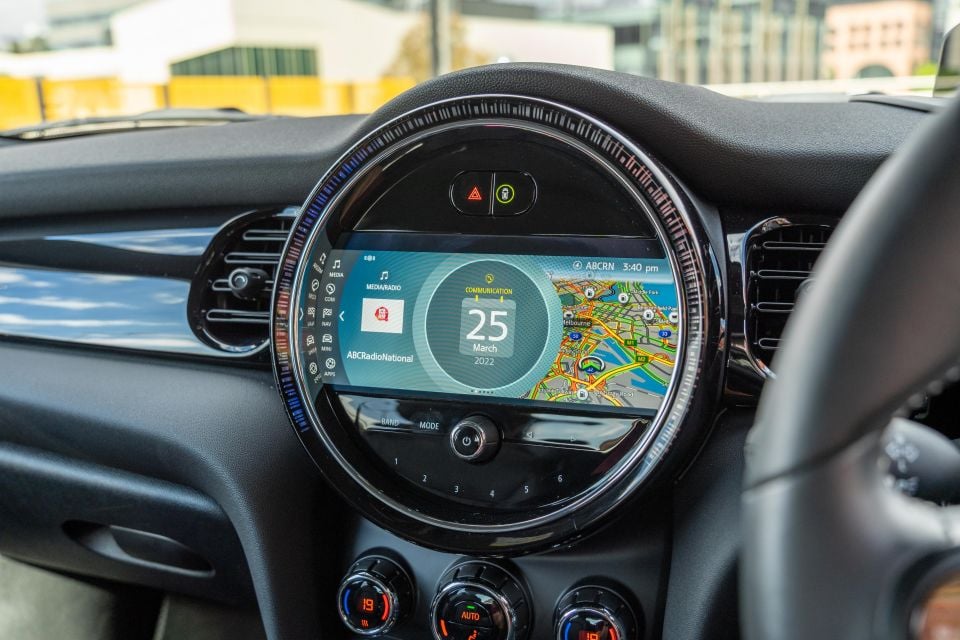
Buy your new car without the stress. It's fast, simple and completely free.

Great service from Travis and team, second time I have used this business would not hesitate to recommend them to anyone
Craig C.
Purchased a Ford Ranger in Sunshine Coast, QLD
CarExpert helped Craig save $7,224 on his Ford Ranger, now let us save you on your next new car.
Get your BEST priceCooper SE Mini Yours highlights:
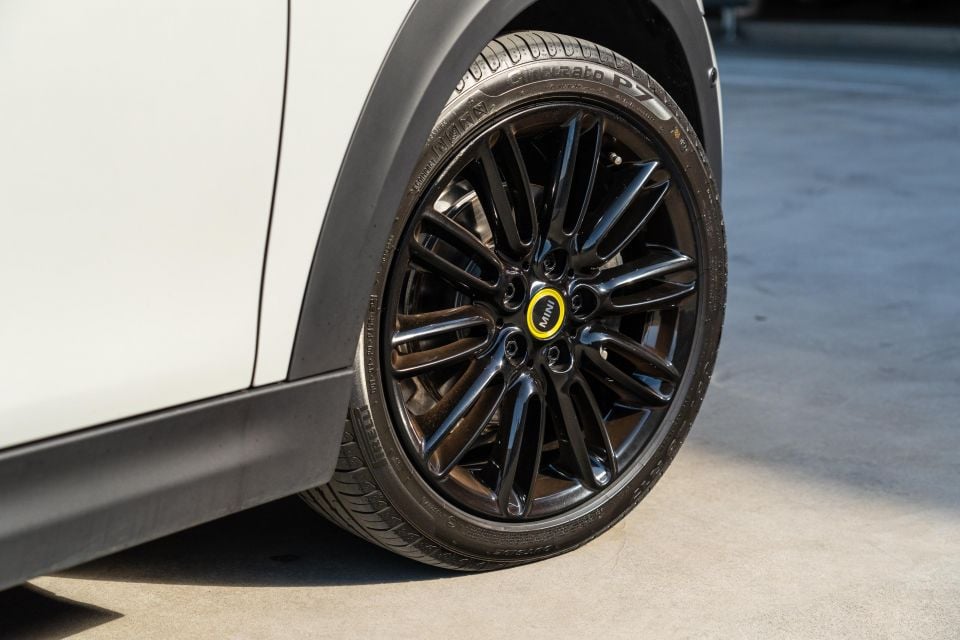
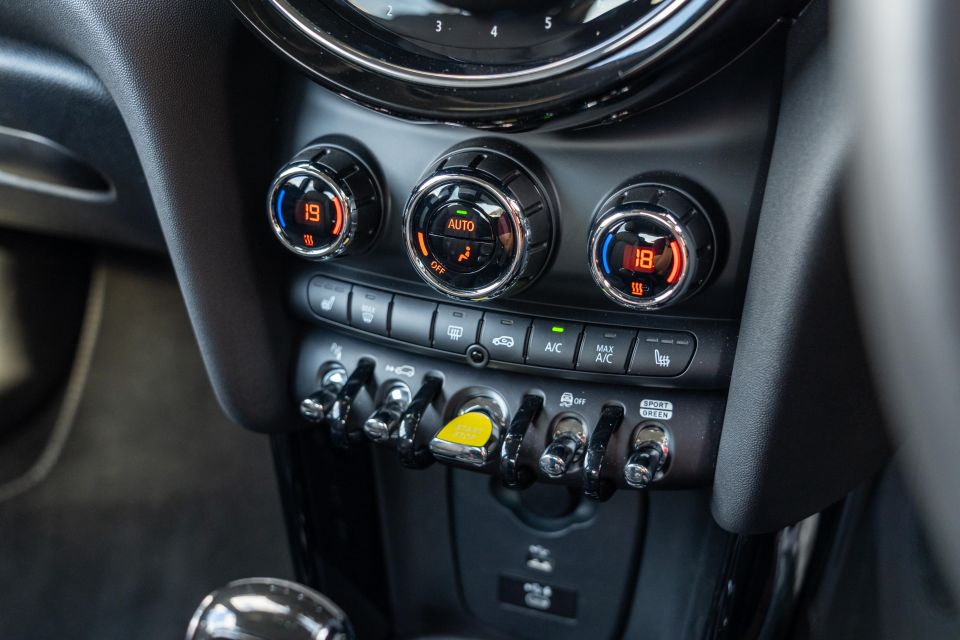
That’s on top of the Cooper SE Classic’s standard specification:

The Mini 3-Door Hatch has a four-star ANCAP safety rating based on testing conducted by Euro NCAP in 2014.
It received a frontal offset score of 14.60 out of 16, a side impact score of 12.19 out of 16, pedestrian and whiplash protection ratings of Good and Acceptable, respectively, and an overall score of 31.78 out of 37.
ANCAP reported (based on Euro NCAP testing) that the Mini 3-Door Hatch failed to meet the minimum threshold in the side impact test for a five-star rating, with driver chest and abdomen protection rated as Marginal.
All Mini Electric Hatch models come with:
Notable omissions include high-speed AEB, lane-keep assist and the option of blind-spot monitoring and rear cross-traffic alert, all features standard or at least available on similarly-priced rivals.

Quite familiar.
Despite its age, the Mini Hatch has one of the nicest city car cabins on sale today, from the overall design to the execution and materials, it all feels premium – as it should for this money.
Our test car’s Carbon Black interior doesn’t offer a lot of visual ‘pop’, but the high-grade leather looks and feels nice, the seats are comfy and offer a good range of manual adjustment, and the boxy proportions mean even taller drivers like myself (at 6’1) have plenty of space in the first row.
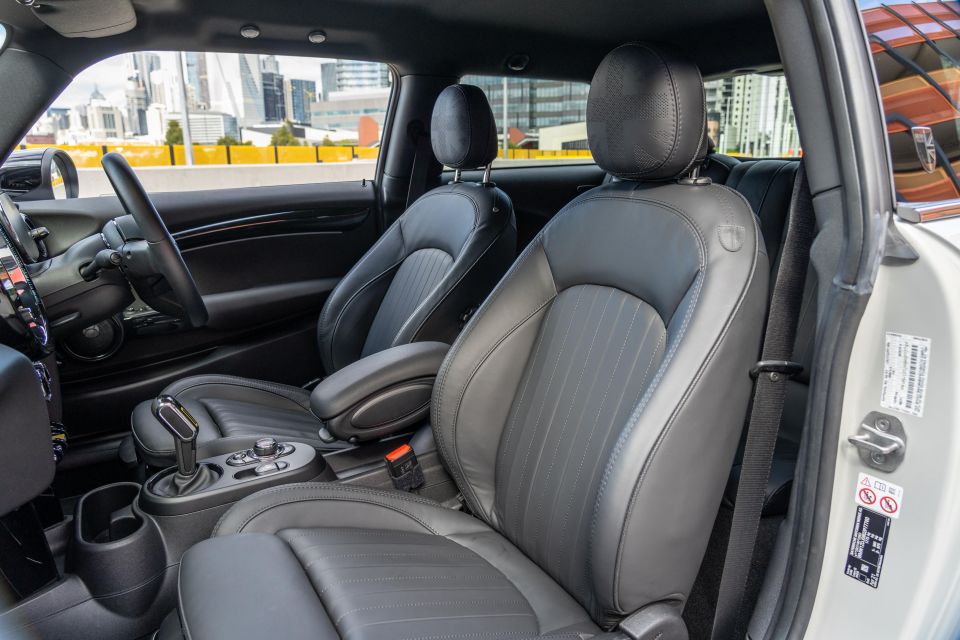
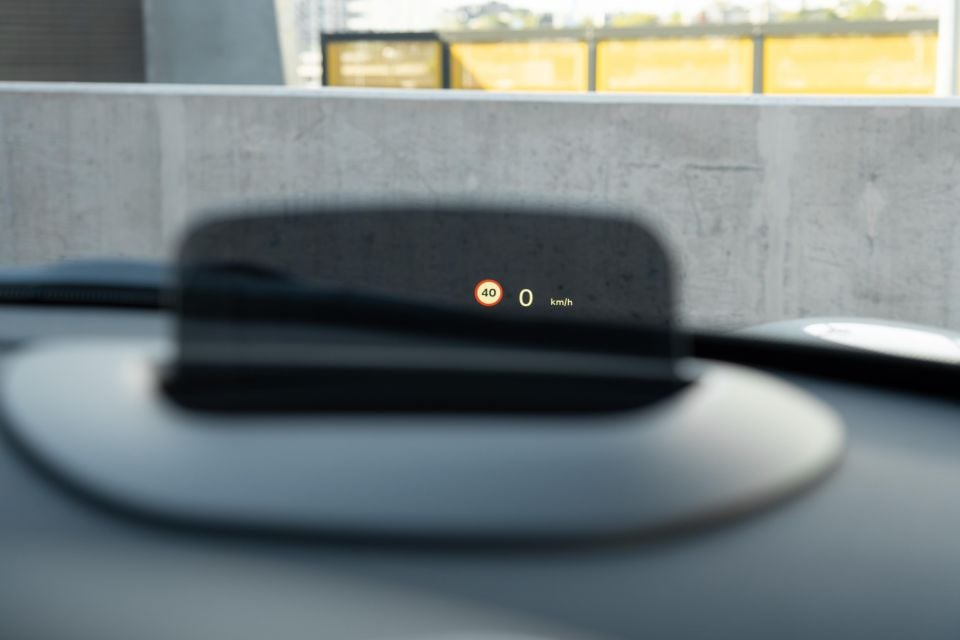
I’m still a fan of retro styling cues like the rounded dashboard fascia and the toggle-style switchgear. It all comes together to give that distinctive Mini feel, and makes the little hatch seem special.
Ahead of the driver is the digital instrument cluster debuted in the pre-facelift Mini Electric, and since standardised across the line-up. It’s not entirely digital – a larger display sits between analogue gauges – but it at least looks the part.
It’s augmented by a flip-up colour head-up display which may not be to everyone’s tastes in terms of the positioning, but it works well enough. The extendable under-thigh cushions are a nice high-end touch too.
The standard panoramic sunroof in Mini Yours models lets heaps of light in and makes the interior, particularly the first row, feel really airy and spacious.
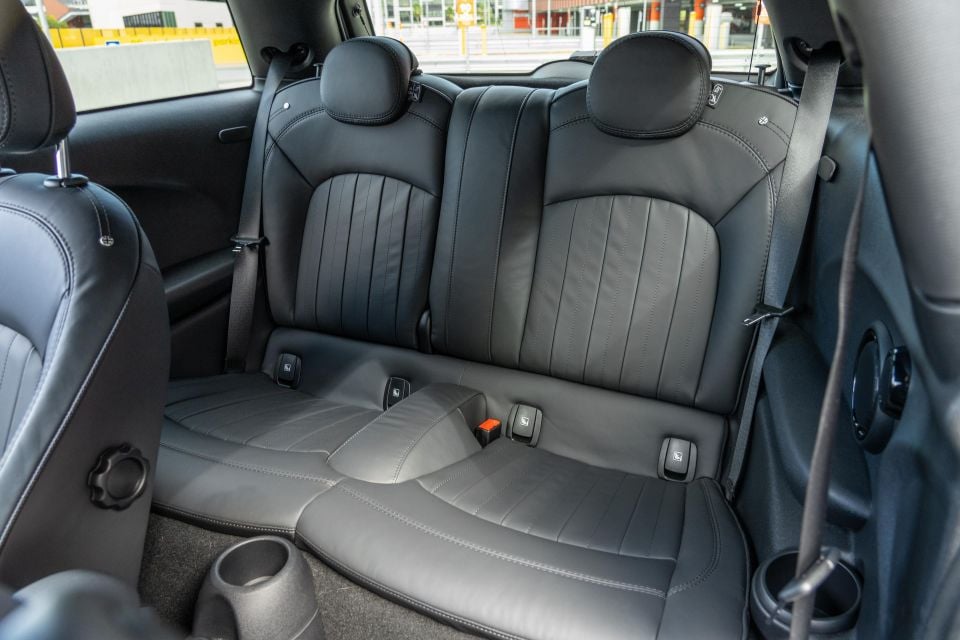
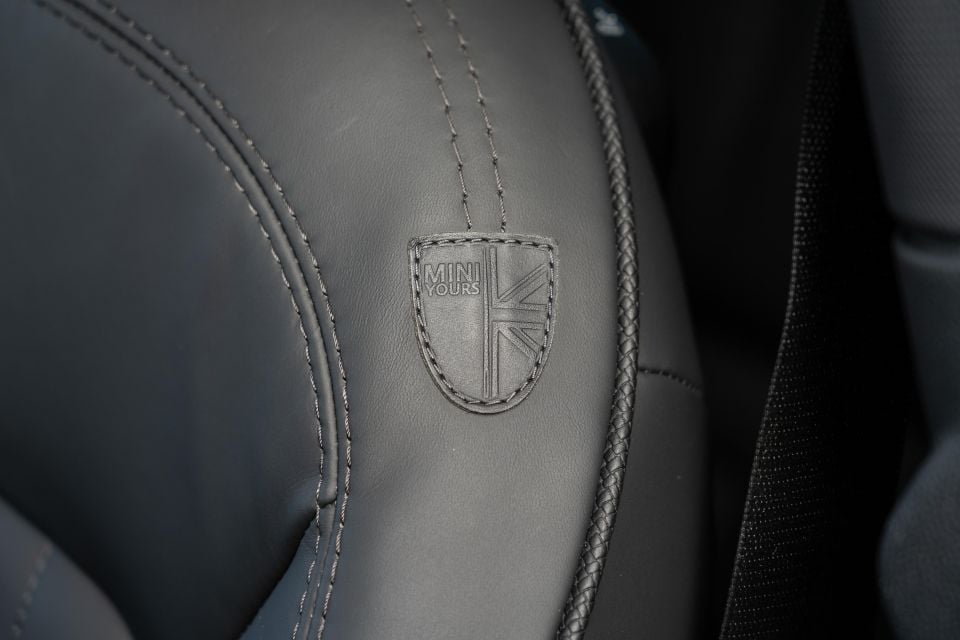
‘Spacious’ isn’t a word I’d use to describe the second row, which is really a “plus two” arrangement.
In my driving position there’s no room for even a small child unless they were in a front-facing car seat. You’d need to be legless to sit behind there, or to be behind a driver who’s crumpled up against the controls.
An average-sized adult can fit in the passenger side behind an adult if the front seat is slid forward a bit – the footwell is quite deep – so you could reasonably expect to fit three adults with a bit of car seat Tetris.
ISOFIX anchors and top-tether points for both rear seats are handy if you have little ones, and there’s armrests on the outside edges of the cabin as well as three cupholders. Not bad given the Mini’s teeny-tiny city-focused proportions.

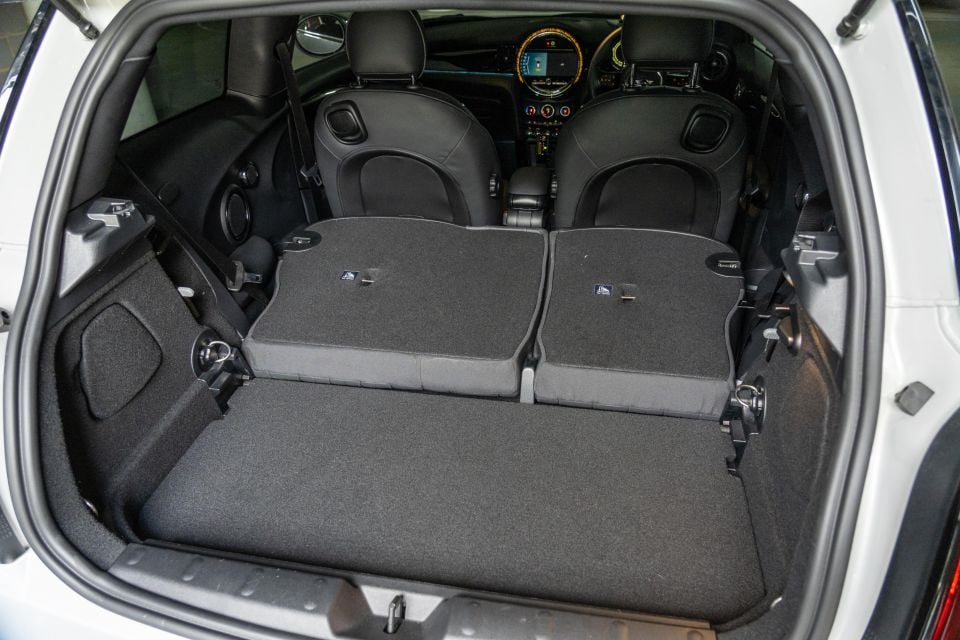
If you choose to carry kids though, I hope they’re happy to walk afterwards – because the Mini Electric’s little 211L boot is designed more for light shopping than prams.
Even my tennis bag fills most of the space back there under the cover, but you can fold the rear seats if you have two people on board and make use of a more accommodating 731L of volume.
There is, however, a large hump between the boot floor and rear seat backs, meaning a long heavy item will take a bit of, as Ross from Friends would say: “PIVOT(ing)”.
No spare wheel resides under the floor either, with all versions of the Mini Hatch using run-flat tyres.
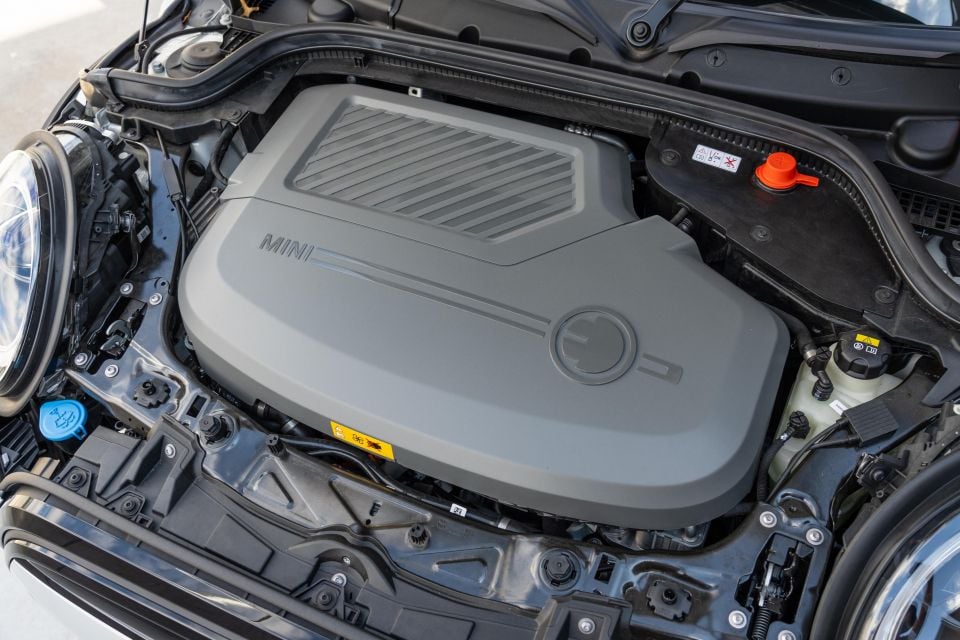
The Mini Electric Hatch is powered by a 135kW/270Nm electric motor, nicked from the now-defunct BMW i3, driving the front axle. It also gets the BMW’s single-speed transmission and anti-slip controller (for stability control) situated near the wheels.
That motor is fed by a relatively small 32.6kWh battery pack, of which 28.9kWh is usable. For reference, even the Hyundai Kona Electric Standard Range features a 39.2kWh capacity.
Mini quotes a maximum driving range of 233 kilometres on the WLTP cycle, which again is at the lower end of what’s on offer from rivals. Only the Mazda MX-30 Electric quotes a shorter range (200km).
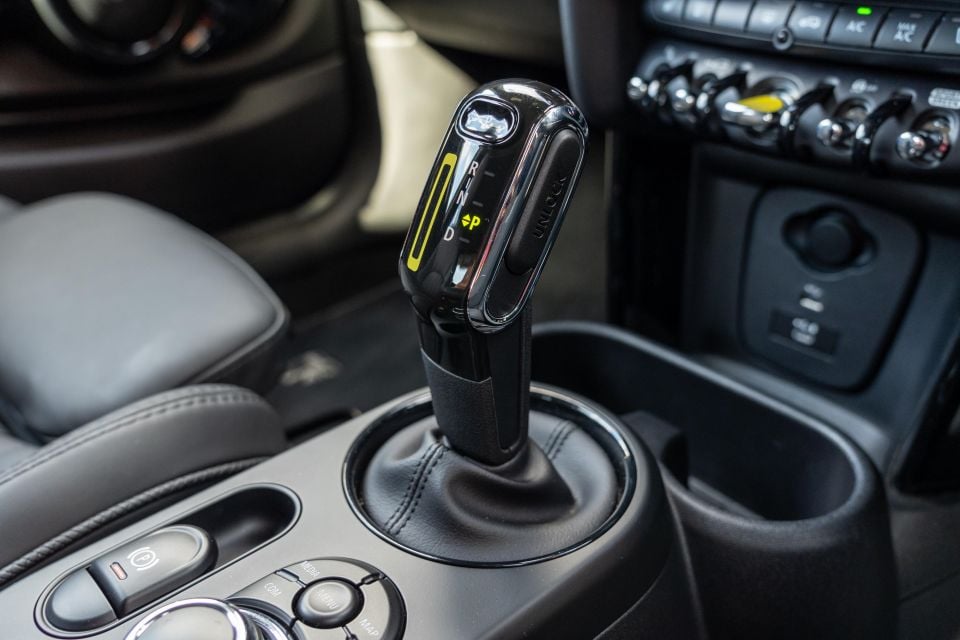
As for driving performance, the company claims the Cooper SE will dash from 0-100 in 7.3 seconds and hit a top speed of 150km/h. That’s about half a second off the petrol-powered Mini Cooper S 3-Door Hatch (6.7 seconds).
Mini Australia doesn’t quote consumption figures in its local marketing, but a global guide says the claimed energy of the Cooper SE 3-Door Hatch is 15.2-17.6kWh/100km on the WLTP cycle. Our test car’s trip computer was showing an average of 15.0kWh/100km.
While the teeny battery doesn’t offer the most range, it makes for pretty quick charging even using older technology. Mini says the Electric Hatch supports only up to 50kW DC fast charging, though even at that rate you can replenish 80 per cent from zero in just 36 minutes.
That extends to 3.12 hours if you charge via a 7.4kW AC charger via a Type 2 plug.
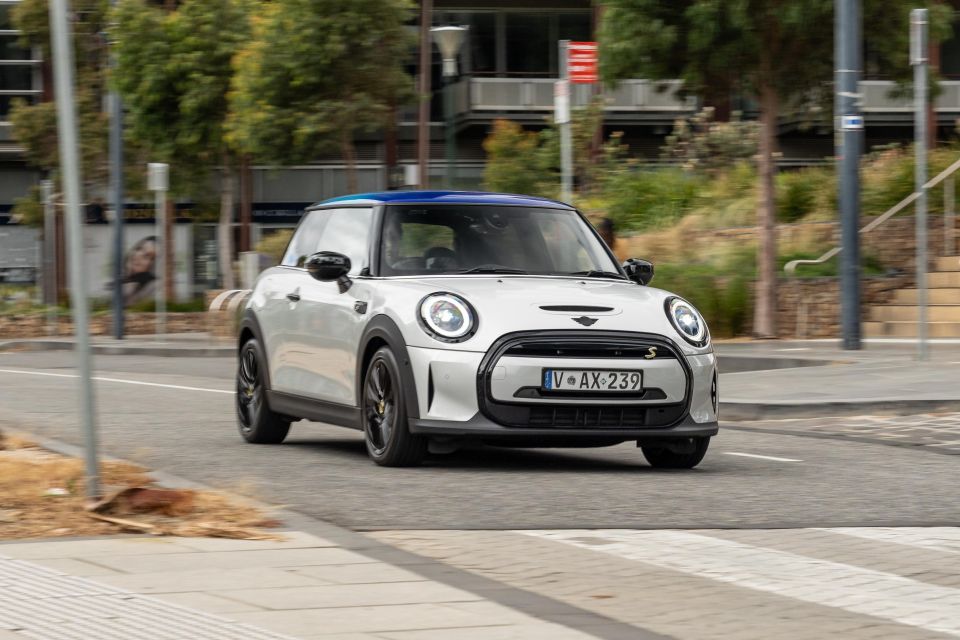
Where expert car reviews meet expert car buying – CarExpert gives you trusted advice, personalised service and real savings on your next new car.
This was my first time piloting an electric Mini and I have to say, after being somewhat disappointed by the pricing and the performance/range specifications on paper, the drive experience turned things around.
Mini prides itself on offering cars with a ‘go-kart feel’ behind the wheel, and the Mini Electric does a pretty good job at upholding that mantra.
Weighing in at just 1365kg, the top-spec Mini Electric Hatch is one of the lightest EVs on sale (courtesy of that small 32.6kWh battery), it’s only 140kg heavier than an equivalent Mini Cooper S 3-Door Hatch – or about two adults-worth.
The nominal weight penalty pays dividends in the drive experience. The Mini Electric drives and handles like a regular Mini should: it’s zippy, darty at the front end, and genuinely fun to punt around.
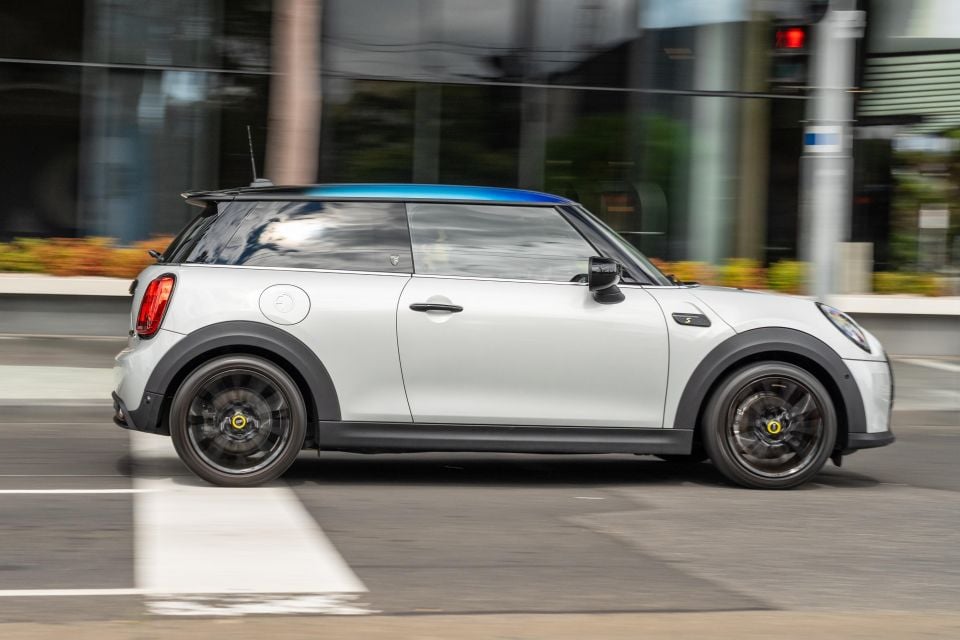
We spent most of our time with the Mini Electric commuting to and from the CarExpert office, including a mix of freeway and inner-city driving. The Mini ate it all up with no dramas.
However, as we’ve mentioned in previous Mini reviews – and vehicles based on the BMW UKL platform in general – road noise isn’t filtered out as much as we’d like, especially from a premium vehicle. The fact the electric drivetrain is much quieter in operation than a conventional petrol or diesel engine only amplifies this.
Why “much quieter” and not “silent”? Mini has tried to dial in some emotion by giving the Electric a synthesised note when on the move – it doesn’t pretend to be a petrol-powered Cooper S, instead it’s a distinctive whirring. It plays a similar noise outside the vehicle too, and it’s quite loud.
Performance is as you’d expect: torquey and linear. It’s not quite as brisk as the petrol-powered Cooper S (7.3 seconds v 6.6 seconds 0-100), but it still feels pretty quick when you sink your boot in. It feels more responsive than the petrol equivalents at city speeds.
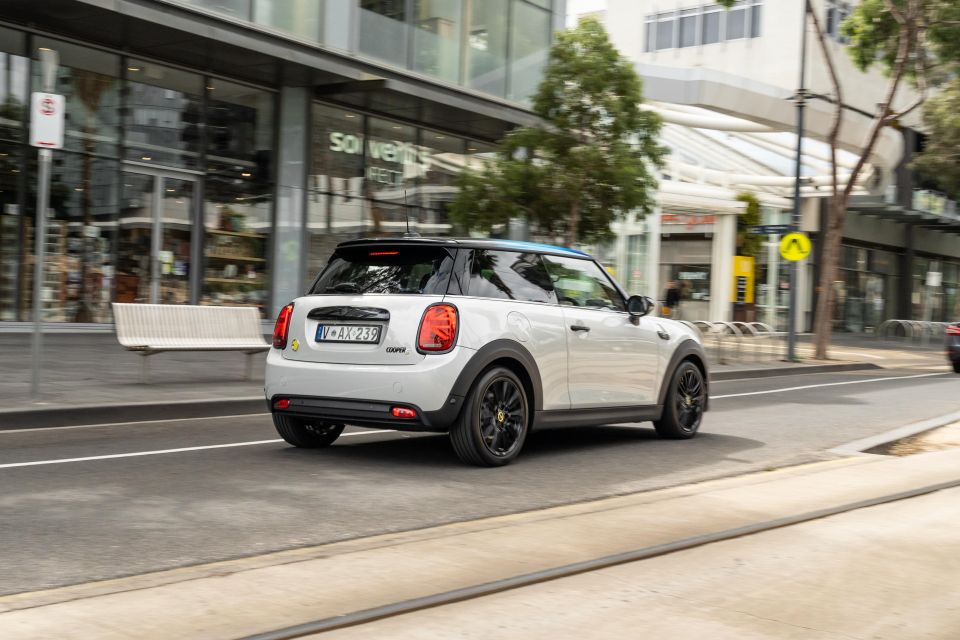
Ride and handling is typical Mini, in that it errs on the sportier side of things and turns in pretty sharply.
It can get a little sharp over larger imperfections like potholes and tram tracks, not helped by the lack of adaptive damping that you get in high-grade versions of the Cooper S and JCW. That said, it’s far from uncomfortable.
The steering is a highlight thanks to its quick ratio and direct feel, making the Mini Electric feel responsive and eager to turn in whether you’re navigating city streets or carving up a B-road on the way home.
As for the driving range, it was hard to get an accurate gauge of what would be achievable on a full charge, as the trip computer seemed to never know how much range was left. It would constantly chop and change depending on the drive conditions, but we reckon 200km of real-world range is doable.
Like other versions of the Mini we’ve sampled of late, the driver assistance suite leaves a bit to be desired.
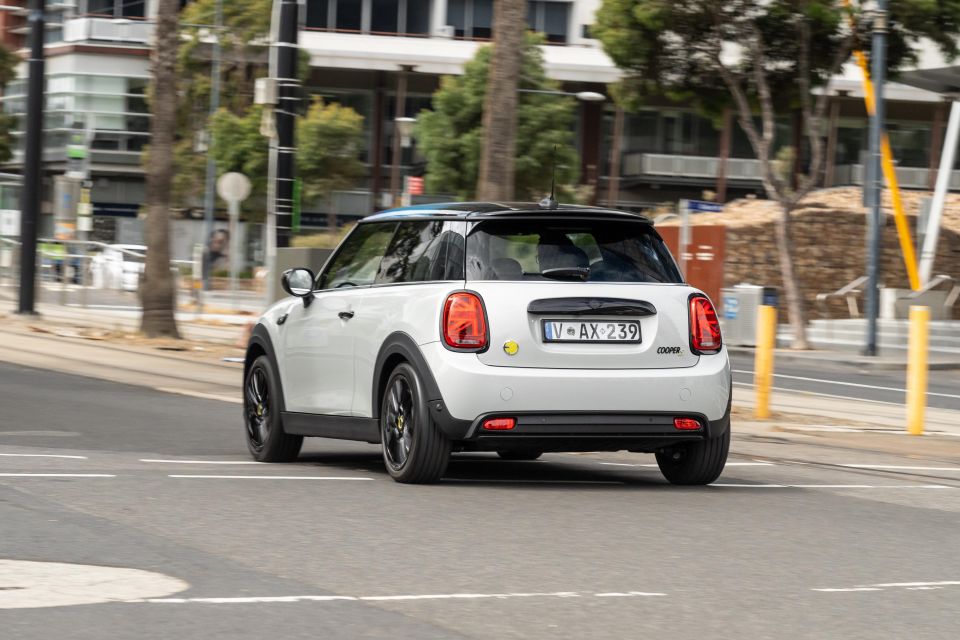
Standard features include low-speed AEB with pedestrian detection, adaptive cruise control with stop/go functionality, as well as lane departure warning. Given the price and competition, that list is underdone.
Take the adaptive cruise, which is camera-based rather than radar. Travel on a highway facing harsh sunlight and the car will suddenly turn off the adaptive cruise as the sensors get overwhelmed. This happened recently with the Cooper S as well.
Lane departure warning doesn’t really do much these days, especially for a car so small. A proper lane-keep assist or lane centring function to go with the adaptive cruise would put the Mini in line with most competitors.
Further, while the glasshouse is big and all-round outward visibility very good, it seems silly no Mini is available with blind-spot monitoring or rear cross-traffic alert. While some will argue they aren’t a necessity, they come in handy in day-to-day situations.

Like BMW, the Mini line-up is covered by a three-year, unlimited-kilometre warranty which is lagging behind premium and mainstream brands – most offer at least five years of coverage these days.
Mini offers Service Inclusive packages for an upfront fee, which cover the first five years or 80,000km of scheduled maintenance. In non-JCW models, including the Mini Electric, it’s $1640 for the package, averaging $410 per annum.
Alternatively, you can pay-as-you-go via Condition Based Service, which instead of using set intervals like most brands relies on vehicle sensors to determine when it’s time to visit your dealer.
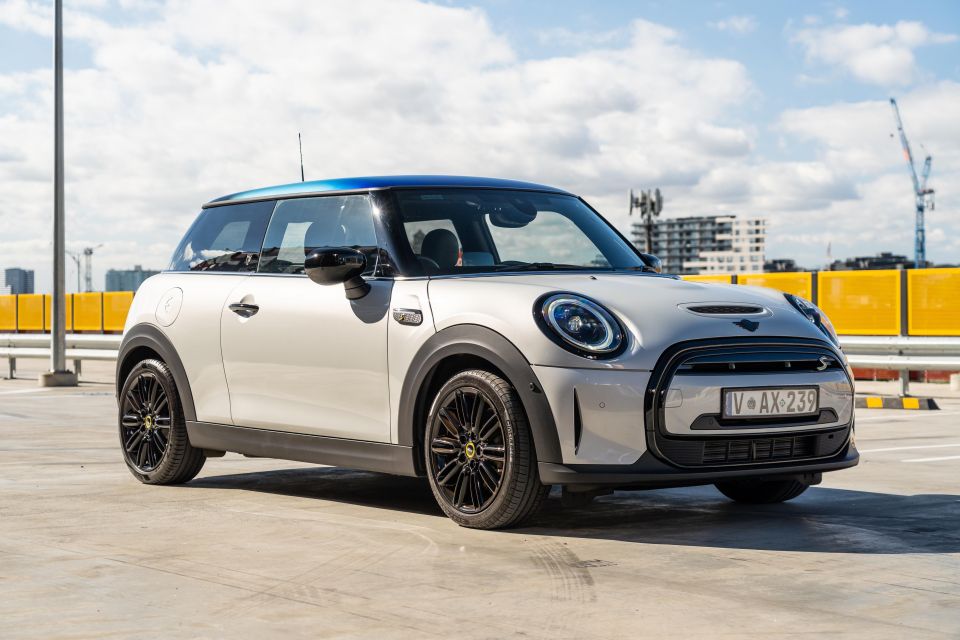
Buy your new car without the stress. It's fast, simple and completely free.

Great service from Travis and team, second time I have used this business would not hesitate to recommend them to anyone
Craig C.
Purchased a Ford Ranger in Sunshine Coast, QLD
CarExpert helped Craig save $7,224 on his Ford Ranger, now let us save you on your next new car.
Get your BEST priceWhile many of the established carmakers have made their electric vehicles look like science projects, the Mini Electric Hatch is as cute and cuddly as its petrol-powered brethren.
However, in keeping the family DNA strong, the existing compromises of the ageing UKL architecture, as well as the dated electric drivetrain from the BMW i3, mean there’s a number of flaws.
It’s priced too high, the range is too short, and the cabin too small for most. The $10,000 upcharge over the Mini Yours-spec Cooper S doesn’t really result in anything other than zero emissions.
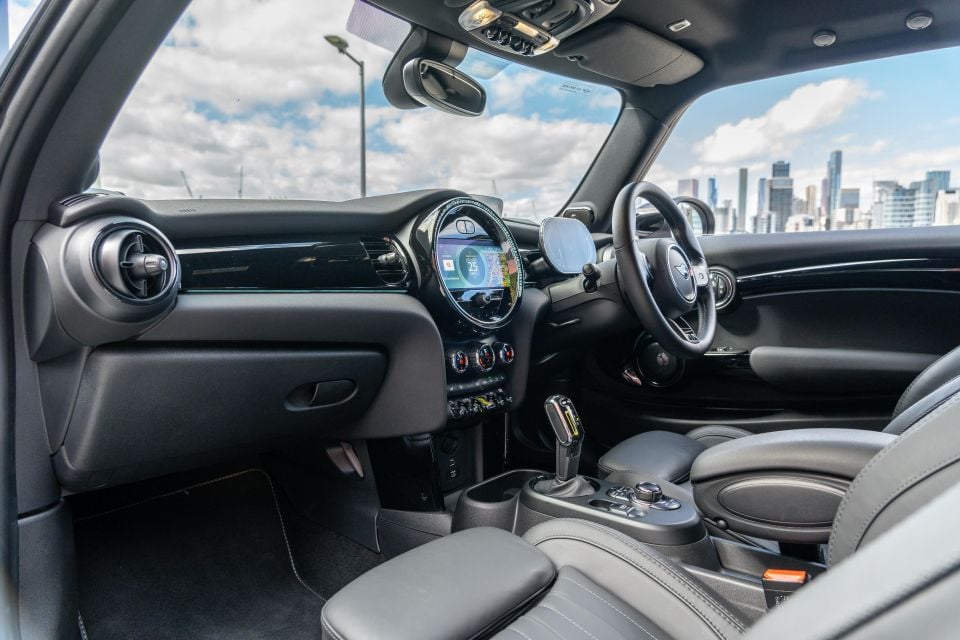
With that said, most Mini buyers aren’t signing on the dotted line because it’s the most pragmatic vehicle for their needs. Like designer clothes and accessories, the modern Mini is a heart purchase not a head purchase – regardless of the powertrain.
Unlike many EVs based on combustion-powered models, the Mini drives and handles pretty much like a normal one, and doesn’t feel like it suffers horribly from the fitment of the heavy battery pack.
Should you do have your heart set on the Mini Electric Hatch, we’d recommend forgoing some of the luxuries in the Mini Yours variant and buying the base car – saving you nearly $7200 before rebates.
For what it’s worth, I couldn’t help but smile every time I locked eyes on this thing or when I zipped around a corner.

Click the images for the full gallery
MORE: Everything Mini Hatch
Where expert car reviews meet expert car buying – CarExpert gives you trusted advice, personalised service and real savings on your next new car.
James is an automotive journalist based in Melbourne, Australia. Before joining CarExpert.com.au in 2020, James has worked at leading auto media outlets including Carsales and CarAdvice, as well as at Pulse agency for Ford Australia's communications team. In 2019 James made Mumbrella's 'Top 20 most prolific web authors in Australia' list after publishing 1,360 articles between March 1, 2018 and February 28, 2019 for CarAdvice. James is also an Ambassador for Drive Against Depression – an Australian charity whose mission is to support mental wellness through the freedom of driving and a shared love of cars.


Max Davies
5 Days Ago


Josh Nevett
4 Days Ago


Max Davies
4 Days Ago


Max Davies
2 Days Ago


Neil Briscoe
1 Day Ago


Max Davies
1 Day Ago